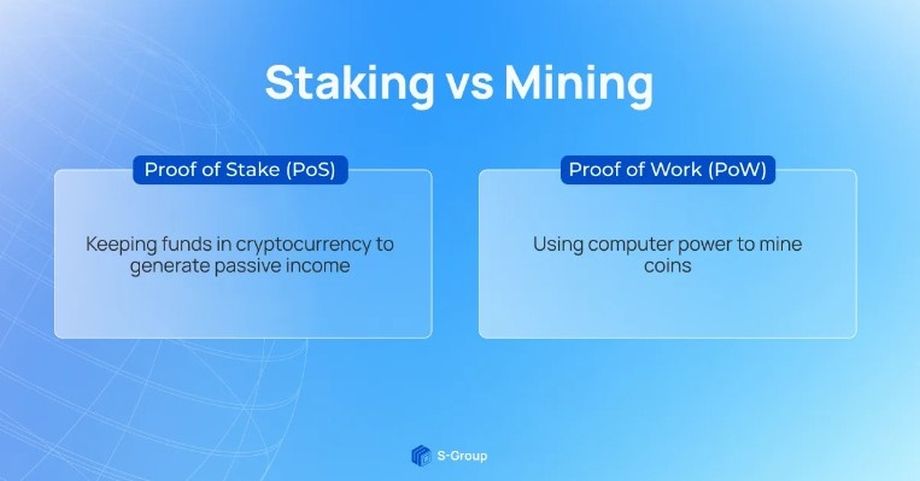What is staking
Staking is one of the ways to earn passive income through cryptocurrencies. Staking is inextricably linked to the PoS algorithm. What does this mean?
PoS or proof-of-stake literally translates to share confirmation. That is, according to the PoS algorithm, it is enough to keep funds in the cryptocurrency to get passive income.
The amount of cryptocurrency in the account plays an important role. The percentage of possible transaction checks depends on it, respectively the final yield of the investor.
Staking can be characterized as a process of storing assets on an electronic wallet with the right to participate in cryptocurrency mining. Basically, they are frozen for a certain period of time, for which the participants receive a reward.
Staking vs Mining
The main difference between staking and mining is in the algorithms used. Mining uses a PoW algorithm. What does this mean? PoW or proof-of-work literally translates as proof of work. That is users of this algorithm use computer power to mine cryptocurrencies.
Miners get rewarded for keeping the network running, confirming transactions in it, and protecting information from loss or counterfeiting with the help of powerful computing systems. This is how the well-known bitcoin cryptocurrency works.
Staking does not require computing machines, the purchase of equipment, or the technical skills of the cryptocurrency owner. In order to start participate, it is necessary to have free assets and the ability to freeze them for a certain period of time. In the case of mining, it is necessary to purchase computing machines and constantly maintain their performance.
Pros and cons
Let’s start with the cons:
– Staking rewards are not paid in traditional monetary currency
– The coin invested in is constantly rising or falling, which affects the payback
Pros:
– Low entry threshold, no specific minimum
– does not require expensive equipment
– large choice of coins
Staking is very similar to a deposit in a bank. Users block coins on a cryptocurrency wallet, which ensures that the network is up and running. They are rewarded for this in the form of a percentage, which is much higher than in any bank. However, it can vary, much depends on the number of participants in the network.
Staking for a crypto investor is a passive method of income, its task is to multiply assets. Staking does not have to be done by yourself. Asset management can be outsourced to a staking provider, exchange, validator, or wallet. We will describe the algorithms, participants, and strategies of staking in detail in the next articles. Subscribe to our newsletter and be the first to learn about financial market news.

